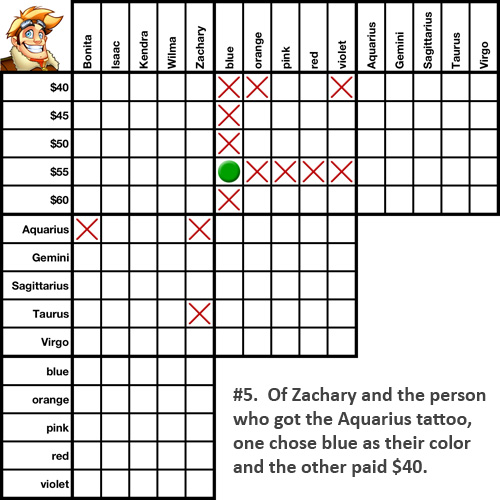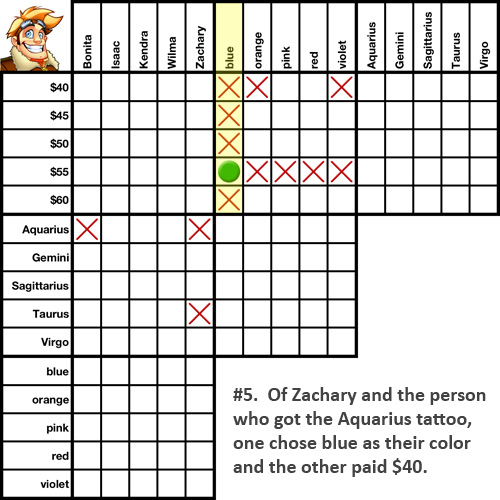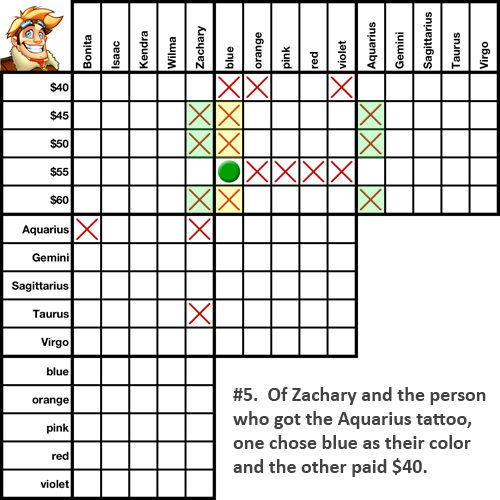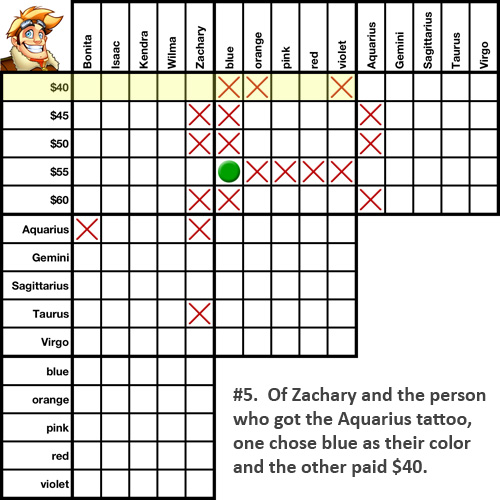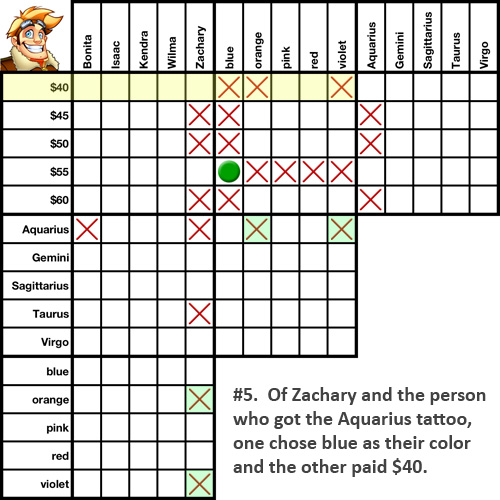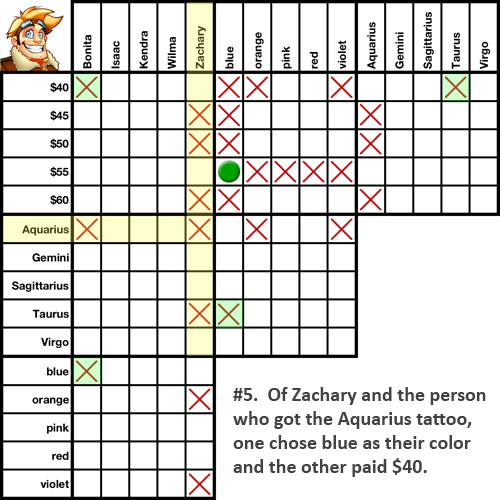Transitive relationships for unaligned pair clues follow the same logic as those for either/or clues. It's all about finding pre-existing true/false relationships for one item in relation to its partner item's category.
It may be hard to believe, but using nothing but transitive relationships, clue #5 and the existing grid state shown here, no less than fourteen new false relationships can be placed on the grid. Let's find out how...


